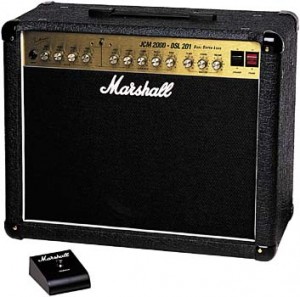It’s not a secret that nothing beats the sound of a great guitar tube amp cranked up. When a tube amp is driven to overdrive, rich and musical even-ordered harmonics flow in abundance and the amplifier seems to take on a new sense of dynamic character that responds better to a player’s touch. It is this feel that gives a tube amp an organic and natural sense, while solid-state amplifiers are considered more sterile in sound because of the lack of this response or harmonics.
The age-old problem has been getting the great tube amp sound at lower and more realistic levels. As the majority of musicians play relatively small clubs and in even smaller practice rooms, only the minority (i.e. those famous guitarists!) get the real opportunity to play these tube amps at the volumes that they sound best. As a result, many of our classic and much beloved Marshall, Fender, and Vox amplifiers are often seen used with distortion and fuzz boxes to compensate. While my personal belief is that these distortion and fuzz boxes are useful in some applications, they are certainly not the best way to achieve great tone when used strictly as the sole source of distortion.
Continue reading

